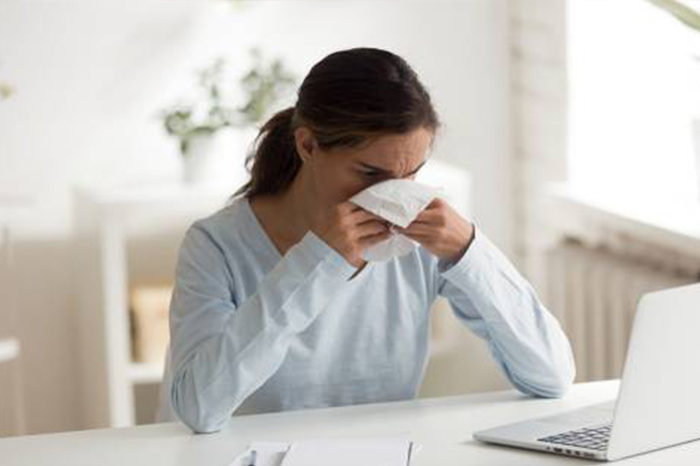Did you know that the human nose filters 10-15 thousand liters of air every day? That a small child can catch a cold up to 12 times a year? And that the idea of pouring seawater into bottles in the form of a spray arose because of water skiing?
The nose is the entrance gate of the respiratory system. Its task is to regulate the inhaled air – to heat or cool, humidify and filter microparticles of dust and other impurities. The ability to perform these functions affects his condition – if the nose is healthy and elastic, everything is fine, if he is susceptible to diseases or sick, this is a problem for the entire respiratory system.
The most common respiratory diseases are the runny nose. It is caused mainly by rhinoviruses and is transmitted by airborne droplets. The main symptoms of rhinitis include itching and swelling of the nasal mucosa, accompanied by a watery, and then a dense runny nose. It is this secret that contains viruses that can spread further. All you have to do is sneeze on the bus next to you or reach for the door handle in the store. The incubation period for rhinitis is 1-3 days. A typical example is children in groups who are even more susceptible to colds due to an immature immune system – one of them starts to catch a cold, and after a few days half of the kindergarten blows its nose. Therefore, it is not surprising that a cold is the most common reason why people go to the pharmacy. Statistics also show that every 70-year-old man has spent an incredible 6 years with a cold in his life.
A cold is a banal disease, but our body still needs peace and time to get rid of it. It’s ideal to spend a few days at home and literally freeze. Complications of rhinitis are quite unpleasant – from inflammation of the paranasal sinuses with a typical headache to painful otitis media, well known, especially to parents of young children. In addition, being at home, you do not spread the infection. In addition to bed rest, patients also use therapeutic drops or nasal spray. Most of them relieve the symptoms of colds – relieve nasal congestion and reduce discharge from it. However, there are also products that fight the cause of rhinitis – viruses – and, therefore, cure rhinitis, and not only relieve symptoms.
Whatever medicine you receive, it is recommended to clean your nose before administration. During a cold, it is heavily clogged with mucus and dried scabs, and the drug, despite these impurities, does not penetrate well into the nasal mucosa, where it should act. Therefore, before each injection of drops into the nose, spray the nose with seawater, blow your nose thoroughly, and only then spray or bury the medicine.
But colds can be prevented – it not only promotes a healthy lifestyle and strengthen the body’s natural immunity but also strengthen the resistance of the respiratory tract. Regular hygiene of the nose with seawater serves as excellent prevention. Remember your vacation, how you can breathe well by the sea! The beneficial effect of seawater on his nose and its elasticity was first realized by Frenchman Francoise Erlemont in 1974. His big hobby was water skiing, he spent a lot of time in the waters of the Atlantic and found that when his nose is so naturally and often in contact with seawater, he no longer gets a cold. He had the idea to start pouring seawater in the form of a spray so that people inside the country who are landlocked could enjoy the beneficial effects of seawater on their nose – and in 1975 he created the first seawater sprays.

Leave a Reply